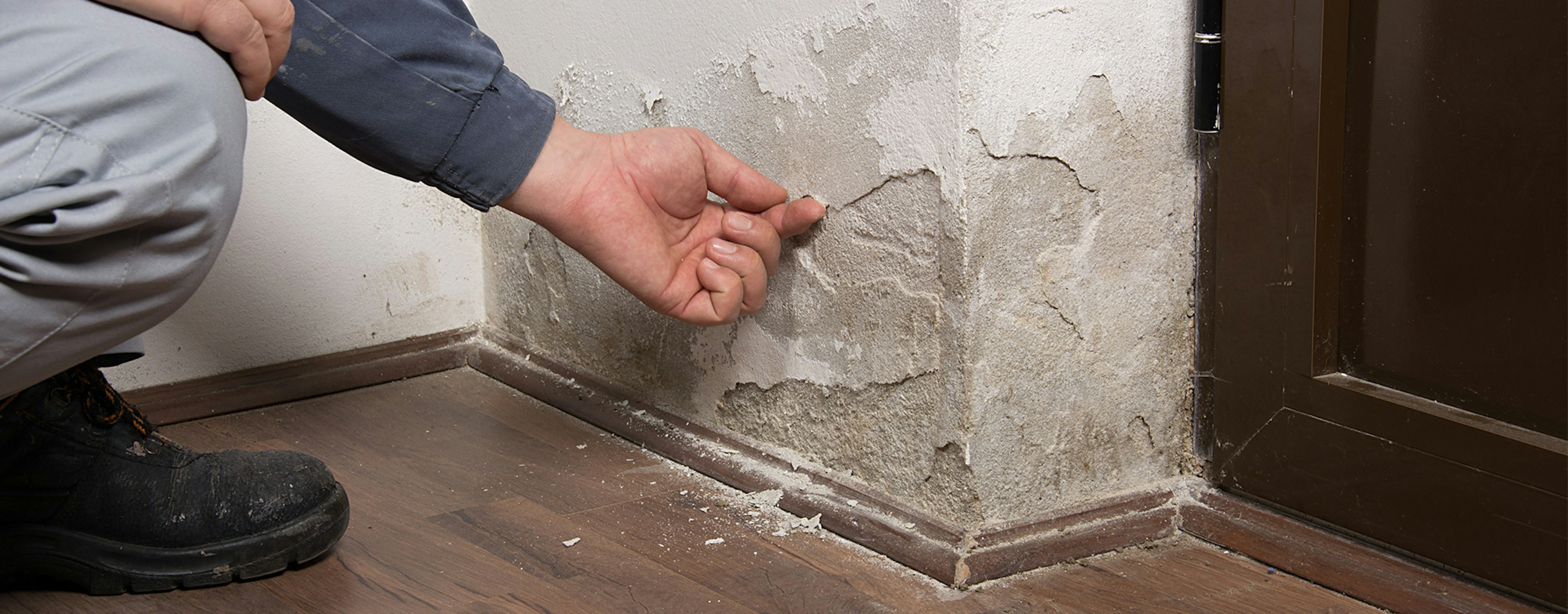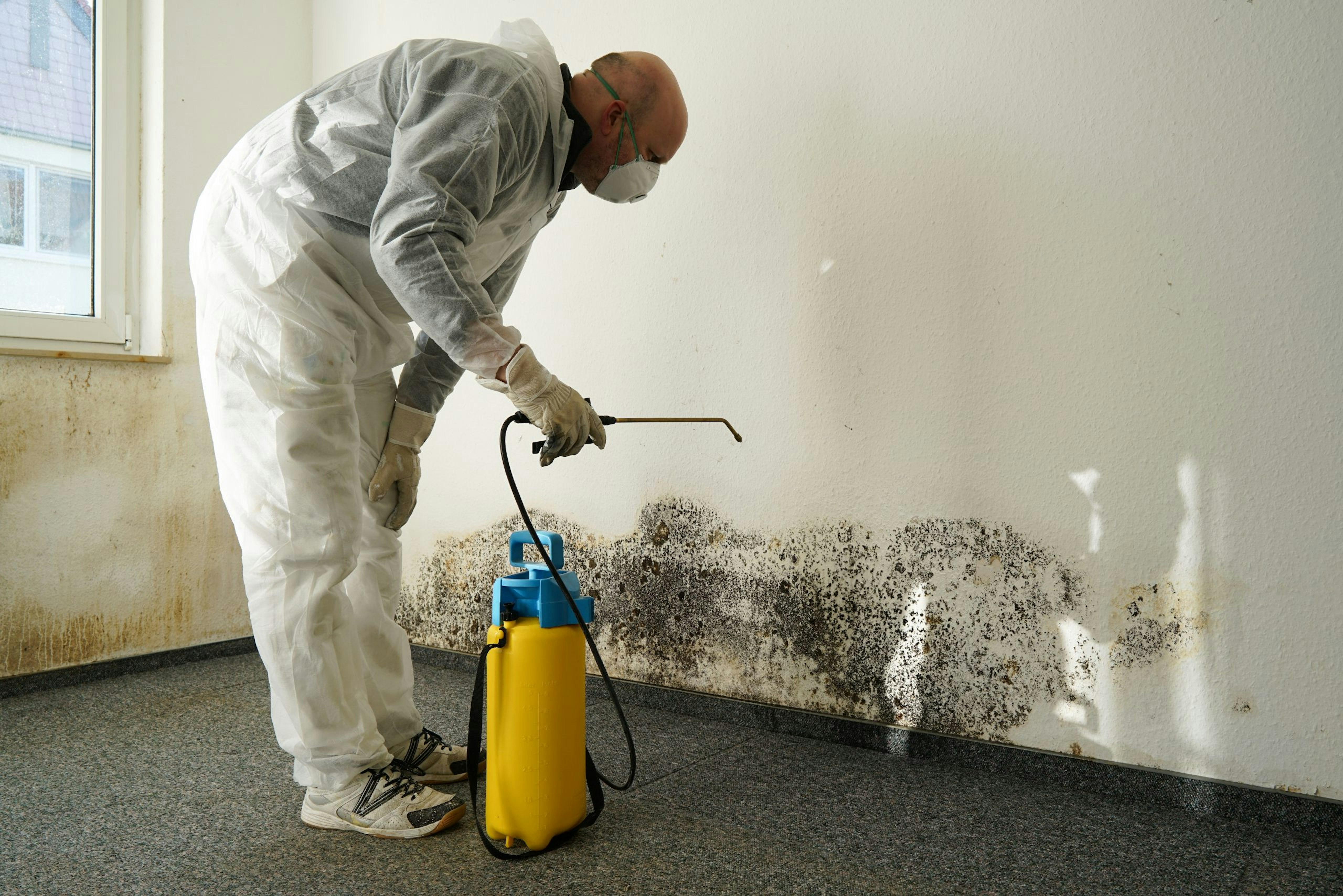Guide to escape of water
Damage caused by escape of water is one of the most common types of property damage, with insurers paying out £1.8 million in claims every day, according to the Association of British Insurers (ABI).

We look at what ‘escape of water’ means, what’s covered by your insurance policy, and how you can lower the risk of water damage at home.
What is ‘escape of water’?
‘Escape of water’ is an insurance term used to describe damage caused by a water leak in your home.
Even a small leak can cause serious damage over a long period, so if you spot a problem, it’s often more cost-effective to deal with it sooner, before it develops into something major.
Is escape of water the same as flooding?
Most of us would describe a sudden influx of water into our homes as a flood, but when it comes to insurance, the terms ‘escape of water’ and ‘flooding’ are completely different.
Flooding occurs when water enters your home from an external source, such as a burst water main or a river. In contrast, escape of water is a leak from a source within your property.
What are common causes of escape of water?
DIY gone wrong is one of the most common causes of escape of water. With that in mind, remember to turn off your water supply and check if there are any pipes in the area you’re working in.
Some other common causes of escape of water include:
Leaky taps and radiators
Blocked toilets and drains
Faulty water supply lines (for example, on washing machines and dishwashers)
Burst pipes
Faulty boilers
When hiring a professional, be sure to look for accreditation or membership of a trade association. Being part of a trade body often means businesses must demonstrate a commitment to safety and compliance standards, as well as deliver high-quality work.
Associations and trade bodies include:
NICEIC (for electricians)
NAPIT (covering a range of services such as heating, electrical, plumbing, and ventilation)
APHC (for plumbers and heating engineers)
NFRC (for roofing contractors)
Is escape of water covered under your buildings or contents insurance?
Escape of water cover is typically included on both buildings and contents insurance, as damage can occur to the building itself as well as to your belongings.
What you end up claiming for will determine which policy you claim against. For example, if your water tank leaks and causes damage to your ceiling, carpets and furniture, your building insurance policy would cover the repairs to your ceiling. Your contents insurance would cover the cost of replacing your carpet and damaged furniture.
If you have a mortgage, your lender will usually insist that you have buildings insurance to cover damage such as escape of water. If you don’t have a mortgage, you don’t legally have to purchase building insurance, but any repair costs would be down to you if you don’t have cover. Similarly, there’s no legal obligation to have contents insurance either, but this would also leave you responsible for covering the cost of replacing your belongings.
If you’re a landlord and include furniture in your rental, it’s a good idea to add landlord contents insurance to your landlord insurance policy to cover the items you provide. Your tenant is responsible for insuring their own belongings.
Why is the excess for escape of water damage usually high?
An excess is the amount of money you pay towards a claim. Escape of water claims often have a higher excess compared to other types of claims, typically starting at £500. This is because these types of claims are the most common and costly to deal with, which is reflected in the excess you’re charged.
What is covered under an insurance policy for escape of water?
What’s covered will ultimately depend on your policy wording, but you can usually expect any damage caused by the leak to be covered. This could include repairing and replastering damaged ceilings and walls, as well as replacing carpets and other items affected by the leak.
Some policies offer optional extras for increased protection, for example:
Trace and access – this provides cover to find the source of the leak if it’s not immediately obvious.
Home emergency cover – this provides temporary repairs in the event of an emergency.
Accidental damage – this covers damage that you’ve inadvertently caused, for example, leaving the taps running in the bath or drilling into a water pipe.
What isn't covered?
Again, what isn’t covered (exclusions) will depend on your specific policy. As a general rule, you won’t be covered for:
Wear and tear – insurers won’t pay for damage due to age or gradual wear, for example, if grout or sealant degrades over time, causing a leak.
Negligence – damage caused by a lack of regular maintenance is usually not covered, for example, blocked toilets, leaking taps, or broken pipes.
Escape of water in an empty home – standard home insurance policies don’t cover properties that are empty for a certain length of time (usually between 30 and 90 days). If you’re going to be away for 30 consecutive days or more, ask your insurer about unoccupied home insurance instead.
Accidental damage – if your policy doesn’t include this, you won’t be covered for accidents, such as leaving the bath running.
Your policy typically won’t cover the repair to the source of the escape of water itself, only the resulting damage. For example, if a burst pipe damages your flooring, your policy would cover the repair or replacement of the flooring, but not the pipe itself.
There may be other items excluded from escape of water cover on your policy, so it’s important to check the terms carefully – this can include:
Cesspits, septic tanks, and associated fittings.
Any escape of water outside of your property that isn’t causing damage to the interior or your contents.
How common are escape of water claims?
Escape of water claims are one of the most common types of home insurance claims, and according to the ABI, these claims are increasing in frequency.
Are certain types of property considered higher risk?
Unoccupied properties are considered to be at higher risk of damage caused by escape of water, mainly because nobody’s there to notice any issues. This can also be the case for second and holiday homes.
Rental properties may also be at higher risk, as tenants might not notice or report any leaks they spot, especially in older homes where the pipework and fittings may have degraded.
How to find a leak or escape of water
Finding a leak early is essential to minimising the damage to your property. Sometimes, a leak can be obvious – for example, damp patches, brown marks on ceilings, or puddles around appliances.
In some cases, you may only notice a leak because your water bill has increased, and it can be much harder to locate the source, requiring the digging up of floors or making holes in walls. If this is the case, finding the source of the leak would be covered by the ‘trace and access’ part of your policy (if it’s included).
If you suspect a leak in your property, you can carry out a quick leak check. Turn off your water supply and record the water meter reading. Check the meter again after 15 minutes to see if it has recorded any water use. If it has, there may be a leak which will need further investigation.
How escape of water can contribute to subsidence
Subsidence occurs when the ground beneath a building begins to sink, taking the foundations with it. This creates large cracks in walls and along windows.
Subsidence is caused by the ground shrinking due to lost moisture. This can occur after several consecutive dry summers and winters, during which the soil has been unable to recover. It can also be caused by trees, poorly prepared ground, and escape of water.
If escape of water is the cause, it’s generally due to burst or broken pipes, where the water then erodes the soil over time. This, in turn, weakens the ground, so it can’t support the building on top.
Minor subsidence can be dealt with relatively easily, but severe subsidence (or ignoring the issue until it becomes severe) can be much trickier and significantly more expensive to resolve. According to the ABI, subsidence-related claims totalled £153 million in the first six months of 2025, with an average payout of £17,264 per claim.
How can you reduce the risk of escape of water?
Regular maintenance can help prevent issues, as well as help you spot early signs of trouble, for example:
Insulate pipes to help prevent freezing and bursting and regularly check for any signs of wear and tear.
Check bathroom and kitchen tiles for cracks, or loose or damaged sealant.
Test stopcocks so you know they’re working in case you need to turn them off.
Regularly check water supply lines and appliances for leaks and damage.
What devices are available to help?
You can purchase leak detection devices that monitor your water use; some also automatically turn off your water if they suspect a leak. These devices are effective at detecting even the smallest leaks and help you catch them early before they become a problem.
An example of this type of device is LeakBot, which you can install yourself. LeakBot will alert you to any changes in the flow of water through an app. Alternatively, Leak Safe is a more advanced device that requires professional installation. Several other options are also available on the market, depending on your needs and budget.
Is it worth making a claim for escape of water?
Whether or not you make a claim depends on how serious the damage is. If there has been a major incident (for example, your water tank has collapsed, causing the ceiling to fall in and damaging everything in the room), then claiming may be your only viable option. Bear in mind that making a claim will typically result in an increase to your premium at renewal.
If the damage is relatively minor and is likely to cost less than your excess, it is often worth fixing the damage yourself. This would leave your policy unaffected.
If the cost of the damage falls somewhere in between, you’ll need to weigh the cost of the excess, plus the expected cost of any premium increase, against the cost of the repair, and make a decision based on that. The amount of money your premium might increase by really depends on how serious the issue is and the cost to repair it. Minor problems might only lead to a small increase, but anything serious could hike up your premium considerably.
Need help with your insurance?
No two homes are the same, and that should be reflected in your home insurance policy. At Alan Boswell Group, we provide independent advice tailored to your needs. To find out more about the protection we offer, you can call a member of the team or send us a quick email.
Make an enquiry
Related guides and insights

How to protect your home from flooding
We examine what to do if you’re immediately affected by a flood and how to protect your property in the future.

Is rising damp covered by buildings insurance?
Rising damp can be a serious problem, especially in older homes, and if left untreated can lead to health issues and devalue your property, so check out our guide, so you know what to look for and what to do about it.

What is Flood Re?
Launched in 2016, Flood Re is a temporary scheme that provides home insurance to at-risk homeowners. Here’s how it works and how it could help you.

Damp and mould in rental property
Damp and mould can cause serious issues. Here, we take a look at the causes of damp and the responsibilities tenants and landlords both have in resolving the problem.
